Do the downloads!! Share!! The diffusion of very important information and knowledge is essential for the world progress always!! Thanks!!
- – > Mestrado – Dissertation – Tabelas, Figuras e Gráficos – Tables, Figures and Graphics – ´´My´´ Dissertation @ #Innovation #energy #life #health #Countries #Time #Researches #Reference #Graphics #Ages #Age #Mice #People #Person #Mouse #Genetics #PersonalizedMedicine #Diagnosis #Prognosis #Treatment #Disease #UnknownDiseases #Future #VeryEfficientDrugs #VeryEfficientVaccines #VeryEfficientTherapeuticalSubstances #Tests #Laboratories #Investments #Details #HumanLongevity #DNA #Cell #Memory #Physiology #Nanomedicine #Nanotechnology #Biochemistry #NewMedicalDevices #GeneticEngineering #Internet #History #Science #World
Pathol Res Pract. 2012 Jul 15;208(7):377-81. doi: 10.1016/j.prp.2012.04.006. Epub 2012 Jun 8.
The influence of physical activity in the progression of experimental lung cancer in mice
Renato Batista Paceli 1, Rodrigo Nunes Cal, Carlos Henrique Ferreira dos Santos, José Antonio Cordeiro, Cassiano Merussi Neiva, Kazuo Kawano Nagamine, Patrícia Maluf Cury
- PMID: 22683274
- DOI: 10.1016/j.prp.2012.04.006
Impact_Fator-wise_Top100Science_Journals
GRUPO_AF1 – GROUP AFA1 – Aerobic Physical Activity – Atividade Física Aeróbia – ´´My´´ Dissertation – Faculty of Medicine of Sao Jose do Rio Preto
GRUPO AFAN 1 – GROUP AFAN1 – Anaerobic Physical Activity – Atividade Física Anaeróbia – ´´My´´ Dissertation – Faculty of Medicine of Sao Jose do Rio Preto
GRUPO_AF2 – GROUP AFA2 – Aerobic Physical Activity – Atividade Física Aeróbia – ´´My´´ Dissertation – Faculty of Medicine of Sao Jose do Rio Preto
GRUPO AFAN 2 – GROUP AFAN 2 – Anaerobic Physical Activity – Atividade Física Anaeróbia – ´´My´´ Dissertation – Faculty of Medicine of Sao Jose do Rio Preto
Slides – mestrado – ´´My´´ Dissertation – Faculty of Medicine of Sao Jose do Rio Preto
CARCINÓGENO DMBA EM MODELOS EXPERIMENTAIS
DMBA CARCINOGEN IN EXPERIMENTAL MODELS
Avaliação da influência da atividade física aeróbia e anaeróbia na progressão do câncer de pulmão experimental – Summary – Resumo – ´´My´´ Dissertation – Faculty of Medicine of Sao Jose do Rio Preto
https://pubmed.ncbi.nlm.nih.gov/22683274/
Abstract
Lung cancer is one of the most incident neoplasms in the world, representing the main cause of mortality for cancer. Many epidemiologic studies have suggested that physical activity may reduce the risk of lung cancer, other works evaluate the effectiveness of the use of the physical activity in the suppression, remission and reduction of the recurrence of tumors. The aim of this study was to evaluate the effects of aerobic and anaerobic physical activity in the development and the progression of lung cancer. Lung tumors were induced with a dose of 3mg of urethane/kg, in 67 male Balb – C type mice, divided in three groups: group 1_24 mice treated with urethane and without physical activity; group 2_25 mice with urethane and subjected to aerobic swimming free exercise; group 3_18 mice with urethane, subjected to anaerobic swimming exercise with gradual loading 5-20% of body weight. All the animals were sacrificed after 20 weeks, and lung lesions were analyzed. The median number of lesions (nodules and hyperplasia) was 3.0 for group 1, 2.0 for group 2 and 1.5-3 (p=0.052). When comparing only the presence or absence of lesion, there was a decrease in the number of lesions in group 3 as compared with group 1 (p=0.03) but not in relation to group 2. There were no metastases or other changes in other organs. The anaerobic physical activity, but not aerobic, diminishes the incidence of experimental lung tumors.
Copyright © 2012 Elsevier GmbH. All rights reserved.
https://en.wikipedia.org/wiki/Computer
http://www.gmail.com https://techcrunch.com/2019/11/15/youve-heard-of-crispr-now-meet-its-newer-savvier-cousin-crispr-prime/
http://www.gmail.com https://projectyourself.com/blogs/news/scientists-have-discovered-a-multidimensional-universe-inside-the-brain?fbclid=IwAR0drgCCQiVuIgW7yHlgyTSaQ1OhxwVKxR7dm-XszbzahXRlev20U2LqtkQ
http://www.weizmann.ac.il/WeizmannCompass/sections/features/a-potent-future-for-stem-cells https://m.phys.org/news/2019-11-free-internet-access-basic-human.html?fbclid=IwAR0SeX9ZMfqseuzBCcS1H2twnbYc34Nuo0CVhJ0-cyl_WdLKdUU1Tkjutnw
https://www.jax.org/news-and-insights/2019/october/modeling-alzheimers-disease-in-culture
http://www.linkedin.com http://www.yahoo.com http://www.gmail.com http://www.facebook.com http://www.twitter.com http://www.forbes.com http://www.nobelprize.org http://www.harvard.edu http://www.nasa.gov http://www.mit.edu http://www.caltech.edu http://www.ucla.edu http://www.stanford.edu

























































































































































































































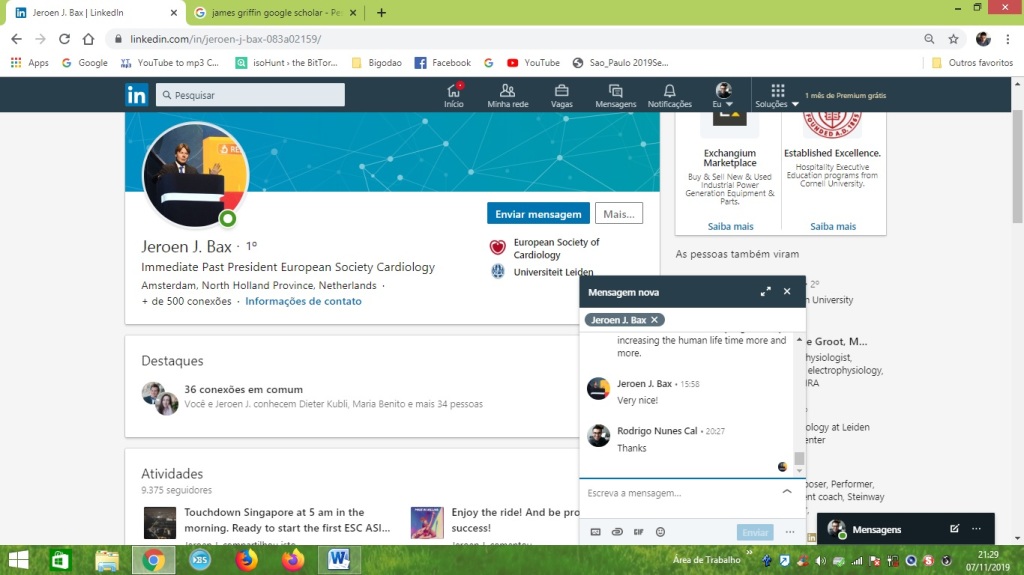

















Search
x
LinkedIn Reaches 660 Million Members, Outlines ‘Members First’ Guiding Principles
AUTHOR
Andrew Hutchinson@adhutchinson
PUBLISHED
Nov. 2, 2019
SHARE IT
LinkedIn, which is currently seeing ‘record levels’ of engagement, has this week announced another milestone, reaching the new high of 660 million members worldwide.
LinkedIn’s leading nation in terms of membership remains the US, where it’s added 8 million new members since February, while it’s also seeing significant growth in India (+7m since Feb) and Brazil (+3m). LinkedIn is also the only major western social media platform that’s able to operate in China, where the platform now has 48 million members.
RETAIL DIVEThe Latest Holiday Retail News in Your Inbox Every Week
The Retail Dive: Holiday Edition will keep you up to speed with the latest news and trends in our free, weekly newsletter.Subscribe Today
LinkedIn has seen improved performance across the board since being purchased by Microsoft back in 2016, with its user base increasing by more than 50% since that time. It also continues to improve its revenue numbers, and as noted, drive improved engagement.
And while total members is not the same as active users – a criticism often raised in regards to LinkedIn’s ‘total members’ data point – the combination of more people signing up, along with better engagement levels, underlines LinkedIn’s evolving efforts to get users more active, and engaged on its platform.
At the same time, and amid various controversies at other social platforms – LinkedIn has this week outlined its ‘guiding principles’ which it adheres to in order to ensure that it makes “the best possible decisions to protect our members and maintain their trust”.
LinkedIn’s four guiding principles, in addition to its foundational value of ‘Members first’, are:
- We provide our members with clarity, consistency, and control over their data. Simply, we tell our members what we will do with their data. We then do what we say we will do with this data. And we strive to provide our members with simple, easy to understand settings and controls so that they are in control of their data.
- We are focused on keeping LinkedIn a safe, trusted, and professional platform. Because we value professional expression, we use systems, technology, and reports from our members to detect and quickly remove any content that violates our Professional Community Policies. Members also rightfully expect content they encounter on LinkedIn to be legitimate. That’s why we are deeply focused on removing fake profiles, jobs, and companies.
- We believe two members with equal talent should have equal access to opportunity. To achieve this goal, we are committed to building a product with no unfair bias that provides opportunity to all of our members. There is a lot of work still to do, but we are focused on working across our company, with our members and customers, and across the industry to close the network gap.
- Finally, we’re a global platform with an obligation to respect the laws that apply to us. We also contribute to the dialogue that shapes these laws so that we can fulfill our vision of creating economic opportunity for every member of the global workforce.
Of course, given that LinkedIn is the professional social network, its members are less likely to be as controversial or confronting as they may be on other platforms, but LinkedIn has managed to largely stay out of the various issues and concerns that have caused major headaches at other platforms of late. LinkedIn has also always been very cautious with its data access – largely to preserve its value – and that’s helped it to steer clear of some of the same data usage problems others have seen.
These announcements also come after LinkedIn was recently named the most trusted social platform for the third year running in Business Insider’s ‘Digital Trust Report’.
Facebook has certainly plummeted quick. The results are based on a survey of 1,974 people who were asked to rank the seven major social networks on six pillars of digital trust – Security, Legitimacy, Community, User Experience, Shareability, and Relevance.
In many ways, it’s not surprising to see LinkedIn come out on top based on these categories – and while, as noted, the platform likely has fewer issues to deal with on these fronts, its performance on each is also by design, with LinkedIn working to maintain its various security and protection measures.
More users, more engagement. It may well be worth giving LinkedIn a closer look for your digital marketing efforts in 2020.
Follow Andrew Hutchinson on Twitter
Filed Under: Digital StrategySocial MarketingSocial Media Updates
MARKETING DIVEEverything you need to know about Artificial Intelligence
Learn how marketers are using AI as part of video strategies and how major companies such as Walmart, JPMorgan Chase, and L’Oreal utilize the changing role of AI to further improve their marketing strategies.Access now
GET THE NEWSLETTER
Subscribe to Social Media Today to get the must-read news & insights in your inbox.Email:
Sign up
By signing up you agree to our privacy policy. You can opt out anytime.
MOST POPULAR
- New Report Examines the Impact of Instagram’s Hidden Likes Experiment on Influencer Engagement
- WhatsApp Launches Product Catalogs for Small Businesses
- Facebook Will Implement Limits on How Many Ads a Page Can Run in 2020
- Facebook Expands Access to Brand Collabs Manager, Adds New Insights to Creator Studio
- Holiday Shopping Habits: Millennials Vs Gen Z [Infographic]
STAFF PICKS
- Study: B2B Marketers Underestimate The Power of Thought Leadership
- Social Media Strategies for the C-Suite and Senior Management That Actually Work
- Using Excel’s Facebook Ads Manager to Transform Your Ad Reporting
- A Small Business Guide to LinkedIn [Infographic]
- Instagram Provides Key Tips to Help Marketers Maximize their On-Platform Efforts
Discover the Core Elements You Need for Effective Social Lead Building
While some businesses get average results using social media for lead gen, many marketers see a significant opportunity, if they can get the balance right and aligned with their strategic focus. Read our new industry survey report to learn more.Access now
Get Social Media Today in your inbox
The free newsletter covering the top industry headlinesEmail:
Sign up
By signing up you agree to our privacy policy. You can opt out anytime.
EXPLORE
RELATED PUBLICATIONS
FOLLOW
FEEDBACK
Work email: *Message: *Submit
© 2019 Industry Dive. All rights reserved. | View our other publications | Privacy policy | Terms of use | Take down policy.
- RESEARCH & FACULTY
- EDUCATION & LEARNING
- JAX MICE & SERVICES
- PERSONALIZED MEDICINE
- NEWS
- GIVE
- ABOUT US
| Press Release October 28, 2019MODELING ALZHEIMER’S DISEASE IN CULTUREBy Joyce Dall’Acqua Peterson JAX Professor William Skarnes. JAX photo by Tiffany Laufer.Under new National Institute on Aging contract, JAX will develop brain cell lines for studyAlzheimer’s disease and related dementias are not only deadly, but also take a terrible toll in healthcare costs and the quality of life of patients and their families. No treatment is yet available to prevent or treat the disease.A promising new approach to finding effective treatments is to study human brain cells that carry mutations found in Alzheimer’s patients. Thanks to human induced pluripotent stem cell (iPSC) and gene-editing technologies, it’s possible to derive every kind of brain cell type, insert dementia-related genes and study them in culture.A recent expert review in the Nature journal Molecular Psychiatry noted, “While still in their relative infancy, these developing iPSC-based technologies hold considerable promise to push forward efforts to combat Alzheimer’s disease and other neurodegenerative disorders.”The National Institutes of Health have contracted with a Jackson Laboratory (JAX) team led by Bill Skarnes, professor and director of cellular engineering, to generate a collection of engineered iPSC brain cell lines for the National Institute on Aging (NIA).Unlike embryonic stem cells, iPSCs are derived from adult human cells.Skarnes’ collaborators in the iPSC Neurodegeneration Initiative (INDI) project are Mark Cookson, senior investigator in the NIA’s Laboratory of Neurogenetics, and Michael E. Ward, investigator in the Inherited Neurodegenerative Diseases Unit of the National Institute of Neurological Disorders and Stroke.“CRISPR-Cas9 technology permits the fluent engineering of disease alleles in human iPS cells at scale,” Skarnes says. “We are delighted to be part of this ground-breaking NIH-funded effort to establish a community resource of human disease models of neurodegenerative disease.By engineering disease-causing mutations in a set of well-characterized, genetically diverse iPS cells, the project is designed to ensure reproducibility of data across laboratories and to explore the effect of natural variation in dementia.”Under the five-year contract, totaling $6,949,000, the team will use CRISPR/Cas9 gene editing technology to introduce a single-nucleotide variant (SNV) of a dementia-related gene into each of the iPSC lines. The lines will be made available to the Alzheimer’s research community.“We envision that this collection of lines, representing the majority of disease-causing variants associated with inherited Alzheimer’s disease and related dementia, will be of wide use to the scientific community,” says Cookson, a cell biologist who studies the underlying pathways that lead to Parkinson’s disease and related disorders. “We have worked to make sure we can share what will be high quality lines widely without restriction. Using this open-science thinking, we aim to reduce duplication and accelerate discovery in this area.”“Neurodegenerative diseases affect millions of people worldwide,” says Skarnes, “and as the population ages, that number will continue to grow. There’s a critical need for new and better treatment and preventive strategies to help patients with Alzheimer’s, Parkinson’s and other diseases.”Skarnes and the Cellular Engineering laboratory at JAX Genomic Medicine in Farmington, Conn., recently established improved techniques for introducing SNVs in human iPSCs via CRISPR/Cas9. Ward was on a research team that achieved the first successful merger of stem cell-derived cell types and CRISPR screening technologies.IPSC Neurodegeneration Initiative (INDI) project, contract #75N95019C00061, National Institutes of Health/National Institute on Drug Abuse< |
Share
Topics
Research newsletters
Learn about the latest research breakthroughs in the fight against Alzheimer’s, cancer and other devastating diseases.
MORE LIKE THIS
Research Highlight October 31, 2019
Improving transgene research with split selectable markers
Press Release September 25, 2019
Looking for clues to longer, healthier life
Research Highlight September 20, 2019
An epigenetic eraser
Search Magazine September 10, 2019
How can we find a cure for Alzheimer’s disease?
YOU MAY ALSO BE INTERESTED IN
AprMay30 – 04SHORT COURSE
Neurogenetic Tools
Genetic Tools,Neuroscience,Cre-lox system,CRISPR Cas9 system,Optogenetics and Pharmacogenetics,Aging,Alzheimer’s DiseaseVIDEO
Video: CRISPR/Cas9 Explained
CRISPR Cas9 systemVIDEO
Webinar: CRISPR/Cas9 – Moving from Founder Mice to Phenotyping
Leading the search forTOMORROW’S CURES
©2019 THE JACKSON LABORATORY
Choose other country or region China
- Share on Facebook
- Share on Tweet
- Share with Email
Search
A potent future for stem cells
From reprogramming to creating new tissues and organs
HebrewFEATURESDATE: OCTOBER 3, 2019SOURCE: WEIZMANN MAGAZINE VOL. 16
What exactly are stem cells—and what promise do they hold for human health? Stem cells are early-stage cells that have the potential to develop into any type of cell—which is why they are often referred to as pluripotent and can become muscle cells, blood cells, brain cells, and so on.
The medical implications are far-reaching. Being able to take a group of these cells that contain the building blocks necessary to become any cell in the body creates the real possibility for scientists to fabricate any healthy tissue to replace damaged or diseased organs. With perhaps some of the most visionary and versatile applications in regenerative medicine today, a clear understanding of stem cells is now central in research on heart disease, cancer, bone marrow transplants, and beyond.
At the Weizmann Institute, scientists are opening new avenues in the study of stem cells, finding ways to reverse, suspend, or continually change cell maturation. Here are some of the research avenues.
Back to basics
A key hurdle in stem cell research was precluding the use of embryos, and Prof. Yaqub Hanna in the Department of Molecular Genetics has been at the forefront of the worldwide effort to reprogram human skin cells to a stem-cell-like state.
Prof. Yaqub Hanna
After conducting his postdoctoral research at MIT, in one of the world’s leading stem cell labs, Prof. Hanna successfully created induced pluripotent stem cells (iPSCs)—reprogrammed mature cells that have the potential to differentiate into any cell type—from skin cells. Until now, the success rate for creating iPSCs has been around 10% and took between two to four weeks. but Prof. Hanna and his team figured out how to revert adult skin cells to iPSCs 100% of the time and in only eight days. This quick and efficient method was his unique breakthrough. This discovery catapults forward the efficiency of cell reprogramming into new, exciting territory and may eventually lead to major advances in tissue engineering and regenerative medicine.
Currently, Prof. Hanna is applying these techniques to bring about personalized stem-cell therapies to men and women facing the challenge of infertility and has already successfully generated human iPSCs that could be nudged genetically to differentiate into progenitors of sperm and egg cells in culture in only six days.
Dr. Yonatan Stelzer, who did his postdoctoral research in the same MIT lab, has been working together with Prof. Hanna to create these efficient induced pluripotent stem cells and explains the process. “Stem cells and development are a one-directional progression, where cells acquire their fate like a rock at the top of a hill that has a lot of action potential,” he says. “Once it starts rolling down, it loses its potential and starts going down these bifurcated routes. The concept of iPSCs shows that we can essentially push this stone back up to the top of the hill so we can reacquire all its decisions again.”
Dr. Yonatan Stelzer
How does a stem cell differentiate?
Cells have the potential to become one of 220 types in the body—but they all begin as stem cells. What determines their fate?
Stem cell differentiation and cell-fate decisions are shaped by complex layers of epigenetic modifications that specify, memorize, and modulate functional embryonic programs. Epigenetics deals with how, and in which cell type, specific genes are expressed—whether they are active or inactive. Using his postdoc research where he created a synthetic sensor that, for the first time, allowed for the visualizing of epigenetic changes as they occur in real time, Dr. Stelzer, a member of the Department of Molecular Cell Biology, is currently focusing on single-cell level phenomenological characterization of embryonic cell-fate decisions to understand how epigenetics play essential and instructive roles during these fundamental processes.
By decoding how cells differentiate on an epigenetic level, he hopes to learn how this key process can go awry, and lead to diseases and cancer. Building on knowledge gained from normal embryonic development, Dr. Stelzer will be able to program stem cells into different cell types, which potentially has monumental implications for regenerative medicine.
In the Department of Biological Regulation, Prof. Atan Gross has been exploring this question from a different direction. Studying MTCH2, a protein he discovered over a decade ago, Prof. Gross and his team found that when stem cells had a copy of the so-called “Mitch” gene, its mitochondria fused together at a high rate, creating larger mitochondrial structures.
Prof. Atan Gross
The elongated mitochondrial cells proceeded to differentiate. Conversely, in stem cells that they genetically engineered to lack the gene, the mitochondria did not fuse as frequently, and remained in a stem cell state as a result. Being able to control whether or not a stem cell differentiates into a mature cell by modulating its mitochondrial morphology and metabolism presents scientists with new possibilities, offering a major step forward in this field.
Is a stem cell’s fate set in stone?
Until now, scientists have assumed that these differentiated cells acted as any other—once the stem cell has matured, its transformation is over and its makeup set. Prof. Shalev Itzkovitz recently discovered that, in fact, this is not the case: they can keep changing. A member of the Department of Molecular Cell Biology, Prof. Itzkovitz has been studying the hundreds of millions of new cells that are born every day in the small intestine. Traveling up the surface of small stalagmite-like protrusions on the inner intestinal wall called the villi, these cells have a lifespan of four days before reaching the villi tip and being discarded.
Using a sequencing method called “laser capture” to create a detailed map of these cells, Prof. Itzkovitz found that as the cells travel up the villi, they continue to differentiate in order to fulfill different functions based on their location. Continuing to explore this discovery and analyzing the difference between healthy and diseased gene expression with regard to cell location in the villi may shed light on what causes inflammatory bowel diseases.
These findings have an impact on more than just the small intestine. The sequencing methods developed by Prof. Itzkovitz’s research team can be applied to creating detailed atlases of cells in various body tissues, and even in tumors.
Prof. Shalev Itzkovitz
A whole new era of medicine is being made possible through stem cell research. By learning how to reprogram human cells, scientists are hoping to create a method where the body cures itself, rather than relying on external and often ineffective medications.
Do stem cells have internal clocks?
Stem cells in the bone marrow replenish the blood daily with billions of short-lived mature blood and immune cells. Research conducted by Prof. Tsvee Lapidot in the Department of Immunology has now demonstrated that stem cells retained in the marrow follow daily cycles of light and darkness. This discovery suggests that adjusting the timing of stem cell harvesting—or the administration of the sleep hormone melatonin—may help increase the success of clinical bone marrow transplantation protocols.
Prof. Tsvee Lapidot
Measuring the levels of blood-forming stem cells in the marrow of mice over a period of 24 hours, Prof. Lapidot’s team found two peaks in stem cell production: one at 11:00 am and the other at 11:00 pm. They found that, during the daylight morning peak, large numbers of stem and progenitor cells were maturing, differentiating into the various types of mature blood and immune cells required for replenishing the blood. During the night peak, on the other hand, the majority of stem cells in the marrow were undifferentiated stem cells—a state maintained in response to melatonin.
Because the night peak was characterized by a greater number of undifferentiated stem cells, bone marrow transplantations with stem cells obtained at night were superior to those with stem cells obtained in the daytime. Moreover, the cells engrafted the bone marrow of recipient mice more than twice as efficiently as stem cells collected during the morning peak. The scientists also found that pretreatment of the stem cell donors with melatonin for a few hours during the day increased the recipients’ stem cell repopulation potential following bone marrow transplantation.
The findings of this study suggest that, in human patients, it might be possible to increase the success of transplantations by pretreating bone marrow donors with melatonin, or with other molecules found to regulate the light and darkness cycles of stem cell production.
The team’s discovery may offer a strategy for increasing the efficacy of transplantation procedures performed on elderly patients, as people over the age of 60 experience a sharp decline in melatonin production.
Prof. Yakub Hanna is supported by the Nella and Leon Benoziyo Center for Neurological Diseases, the David and Fela Shapell Family Center for Genetic Disorders Research, the Kekst Family Institute for Medical Genetics, the Helen and Martin Kimmel Institute for Stem Cell Research, Helen and Martin Kimmel Award for Innovative Investigation, Pascal and Ilana Mantoux, Edmond de Rothschild Foundations, Zantker Charitable Foundation, Rachel Peles, Estate of Zvia Zeroni, and the European Research Council.
Prof. Atan Gross is supported by the Rising Tide Foundation and the Estate of Emile Mimran. He is the incumbent of the Marketa & Frederick Alexander Professorial Chair.
Prof. Shalev Itzkovitz is supported by the Wolfson Family Charitable Trust, the Edmond de Rothschild Foundations, and the European Research Council.
Prof. Tsvee Lapidot is supported by the Helen and Martin Kimmel Institute for Stem Cell Research, the Felix and Silvia Schnur Endowment Fund in Stem Cell Research, the Dr. Beth Rom-Rymer Stem Cell Research Fund, the Henri Gutwirth Fund for Research, the Hadar Impact Fund, and Asher Pertman and Wayne Pertman. He is the incumbent of the Edith Arnoff Stein Professorial Chair in Stem Cell Research.
Dr. Yonatan Stelzer is supported by the Benoziyo Fund for the Advancement of Science, the Helen and Martin Kimmel Institute for Stem Cell Research, and the Jean – Jacques Brunschwig Fund for the Molecular Genetics of Cancer. He is the incumbent of the Louis and Ida Rich Career Development Chair.Tags: STEM CELLSPROF. YAQUB HANNADR. YONATAN STELZERPROF. ATAN GROSSPROF. SHALEV ITZKOVITZPROF. TSVEE LAPIDOT
More Stories
NEW SCIENTISTSMaking immunotherapy more effectiveDr. Rony Dahan and his colleagues have engineered a cancer immunotherapy drug that is 30 times more effective than existing compounds in targeting a specific protein involved in immune activation.DATE: OCTOBER 23, 2017SPECIAL EVENTSNew laboratory for brain researchProf. Daniel Zajfman dedicated the new Dr. Daniel C. Andreae Laboratory for Brain Research for Dr. Ivo Spiegel of the Department of Neurobiology.DATE: DECEMBER 24, 2017NEW SCIENTISTSExploring cancer’s environmentDr. Leeat Keren studies how interactions among cancer cells, healthy cells, and immune cells drive the progression of different cancers and affect their responses to treatment. DATE: OCTOBER 7, 2019GIVING to WEIZMANNESTABLISHInstitutes and Centers
Free Internet access should be a basic human right, study says
HomeShareFeedbackAdd to favoritesCommentsNewsletter
Full versionScience X profileAbout
Free Internet access should be a basic human right, study says
November 11, 2019 , University of Birmingham

Free internet access must be considered as a human right, as people unable to get online—particularly in developing countries—lack meaningful ways to influence the global players shaping their everyday lives, according to a new study.
As political engagement increasingly takes place online, basic freedoms that many take for granted including free expression, freedom of information and freedom of assembly are undermined if some citizens have access to the internet and others do not.
New research reveals that the internet could be a key way of protecting other basic human rights such as life, liberty, and freedom from torture—a means of enabling billions of people to lead ‘minimally decent lives’.
Dr. Merten Reglitz, Lecturer in Global Ethics at the University of Birmingham, has published his findings—the first study of its kind—in the Journal of Applied Philosophy.
“Internet access is no luxury, but instead a moral human right and everyone should have unmonitored and uncensored access to this global medium—provided free of charge for those unable to afford it,” commented Dr. Reglitz.
“Without such access, many people lack a meaningful way to influence and hold accountable supranational rule-makers and institutions. These individuals simply don’t have a say in the making of the rules they must obey and which shape their life chances.”
He added that exercising free speech and obtaining information was now heavily dependent on having internet access. Much of today’s political debate took place online and politically relevant information is shared on the internet—meaning the relative value these freedoms held for people ‘offline’ had decreased.
Dr. Reglitz’s research attributes to the internet unprecedented possibilities for protecting basic human rights to life, liberty and bodily integrity.
Whilst acknowledging that being online does not guarantee these rights, he cites examples of internet engagement that helped hold Government and institutions to account. These examples include:
- The ‘Arab Spring’- new ways of global reporting on government atrocities.
- Documenting unjustified police violence against African Americans in the US.
- #MeToo campaign—helping to ‘out’ sexual harassment of women by powerful men.
Dr. Reglitz defines ‘moral human rights’ as based on universal interests essential for a ‘minimally decent life’. They must also be of such fundamental importance that if a nation is unwilling or unable to uphold these rights, the international community must step in.
The study points to a number of important political institutions which have committed to ensuring universal access for their populations, convinced that this goal is affordable:
- The Indian state of Kerala has declared universal internet access a human right and aims to provide it for its 35 million people by 2019.
- The European Union has launched the WiFi4EU initiative to provide ‘every European village and city with free wireless internet access around main centres of public life by 2020.
- Global internet access is part of the UN Sustainable Development Goals, with the UN demanding states help to deliver universal Internet access in developing nations.
Dr. Reglitz outlines the size of the challenge posed in providing universal internet access, noting that the UN’s International Telecommunication Union estimated that, by the end of 2018, 51 percent of the world’s population of 7 billion people had access to the Internet.
Many people in poorer parts of the world are still without internet access, but their number is decreasing as technology becomes cheaper. However, internet expansion has slowed in recent years, suggesting universal access will not occur without intentional promotion.
“Universal internet access need not cost the earth—accessing politically important opportunities such as blogging, obtaining information, joining virtual groups, or sending and receiving emails does not require the latest information technology,” commented Dr. Reglitz.
“Web-capable phones allow people to access these services and public internet provision, such as public libraries, can help get people online where individual domestic access is initially too expensive.”
He added that the human right to internet access was similar to the global right to health, which cannot require globally the highest possible medical treatment, as many states are too poor to provide such services and thus would face impossible demands.
Instead, poor states are called upon to provide basic medical services and work toward providing higher quality health care delivery. Similarly, such states should initially offer locations with public Internet access and develop IT infrastructure that increases access.
According to the NGO The World Wide Web Foundation, founded by World Wide Web inventor Tim Berners-Lee ‘affordability’ remains one of the most significant, but solvable, obstacles to universal access.
For the Foundation, internet access is affordable if one gigabyte of data costs no more than two percent of average monthly income—currently some 2.3 billion people are without affordable Internet access.
More information: ‘The Human Right to Free Internet Access’ – Dr. Merten Reglitz is published in the Journal of Applied Philosophy.
Provided by University of Birmingham
New fossil pushes back physical evidence of insect pollination to 99 million years ago 4 hours agoStudy reveals how two strains of one bacterium combine to cause flesh-eating infection 4 hours agoNew research explains how HIV avoids getting ZAPped 4 hours agoPrey-size plastics are invading larval fish nurseries 4 hours agoSmart metamaterials that sense and reprogram themselves 10 hours ago feature
About
Phys.org™ (formerly Physorg.com) is a leading web-based science, research and technology news service which covers a full range of topics.
Phys.org is a part of Science X network. With global reach of over 5 million monthly readers and featuring dedicated websites for hard sciences, technology, smedical research and health news, the Science X network is one of the largest online communities for science-minded people.Read moreclose
What do you think about this particular story? Your feedback will go directly to Science X editors.
Your name
Your emailsendclose
About
Phys.org™ (formerly Physorg.com) is a leading web-based science, research and technology news service which covers a full range of topics.
Phys.org is a part of Science X network. With global reach of over 5 million monthly readers and featuring dedicated websites for hard sciences, technology, smedical research and health news, the Science X network is one of the largest online communities for science-minded people.Read more
Newsletter
Science X Daily and the Weekly Email Newsletter are free features that allow you to receive your favorite sci-tech news updates in your email inboxSubscribe
This site uses cookies to assist with navigation, analyse your use of our services, and provide content from third parties. Privacy PolicyGot it

FRONTIERSNANOMATERIALSTECHNOLOGYHEALTH 14 VIEWS
Nanoparticles Cross Blood-Brain Barrier To Treat Stroke
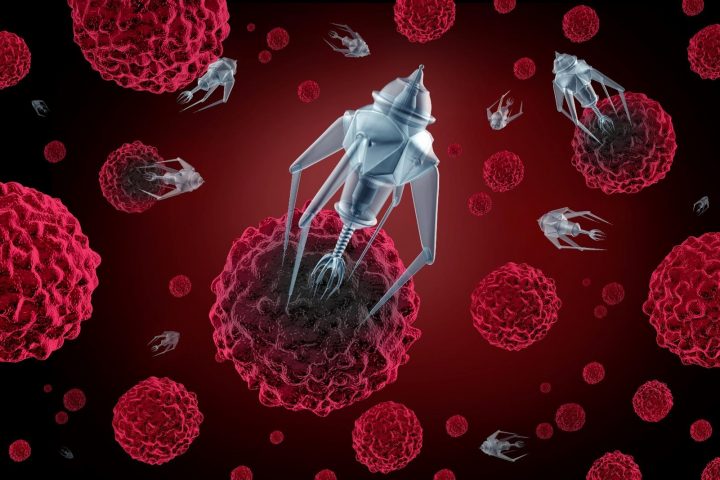
Researchers are reporting that they were able to pass liposomes across the tiny tears in the vasculature that occur during ischemic strokes. Liposomes are lipid vesicles, naturally produced by the body and easily made in the lab, that is only about 100 nanometers wide.
In tests on mice, they used in vivo real-time imaging and histological analysis to show that the liposomes successfully penetrated the blood-brain barrier and into the area injured by stroke.
Liposomes are a tried and tested method of delivering drugs to the body – and are currently used to treat patients, for example, to target cancer drugs into the tumor at high doses which increases their concentration relative to other parts of the body,” they said. They are easy to manufacture and used across the NHS. But their research shows that liposomes have important implications for neurologists too.
Source: MedgadgetPREVIOUS ARTICLEAI System Fashion ++ Helps People Make Fashion ChoicesNEXT ARTICLEScientists Design Better Batteries For A Renewable Energy Grid
YOU MAY ALSO LIKE

Nanoparticles Can Prevent Peanut Allergy
7 months ago

The A.I. Diet
8 months ago

New Payment App Lets You Spend Cryptocurrencies In Physical Stores
6 months ago

Brain Changes May Help Detect Parkinson’s Disease Earlier
5 months ago
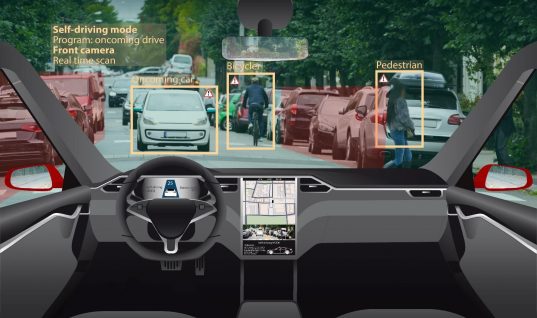
Ford Self-Driving Cars To Launch In Austin In 2021
2 months ago

Time-Banking System: Blockchain Measures One’s Value To Society
5 months ago
PQ RECOMMENDED BOOK
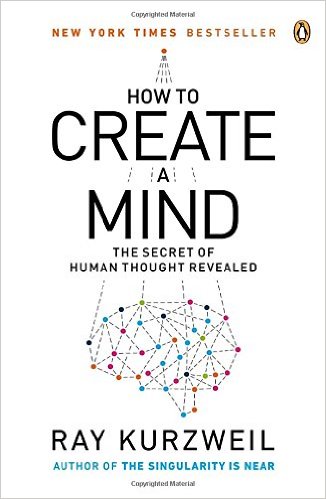
Contribute & Collaborate
You can contribute your articles on emerging fields to Pioneering Minds. You can also collaborate with Pioneering Minds on patents within various categories of emerging fields like AI, Space Exploration, Nanomaterials, Autonomous Vehicles, DNA Editing, Robotics, IOT, Quantum Computing, Wearables, 3D Printing, Cryptocurrency, Energy Storage, Neurophotonics and other.
Pioneering Minds
Follow Us
Twitter Feed
© 2017-2019 Pioneering Minds

SectionsSKIP TO CONTENTSKIP TO SITE INDEX
How Einstein Became the First Science Superstar
A century ago, astronomers proved the general theory of relativity — and made him a global household name.
Albert Einstein, around 1919.Credit…Ullstein Bild, via Getty Images
By Ron Cowen
Mr. Cowen is the author of “Gravity’s Century: From Einstein’s Eclipse to Images of Black Holes.”
- Nov. 6, 2019
Early in 1919, two teams of British astronomers embarked on a journey to the far reaches of the planet to observe a solar eclipse. Nearly eight months later, on Nov. 6, 1919, the teams presented their findings before a packed audience of scientists in London. Their announcement changed forever how humans view the universe.
ADVERTISEMENTContinue reading the main story
Site Information Navigation
- Contact Us
- Work with us
- Advertise
- T Brand Studio
- Your Ad Choices
- Privacy
- Terms of Service
- Terms of Sale
- Site Map
- Help
- Subscriptions

LoginSearch
- Disrupt Berlin 2019
- Startups
- Apps
- Gadgets
- Videos
- Audio
- Extra Crunch
- Newsletters
- Events
- Advertise
- —
- Crunchbase
- More
You’ve heard of CRISPR, now meet its newer, savvier cousin CRISPR Prime
Sarah Buhr@sarahbuhr / 4:42 pm -03 • November 15, 2019 Comment

Image Credits: Bryce Durbin
CRISPR, the revolutionary ability to snip out and alter genes with scissor-like precision, has exploded in popularity over the last few years and is generally seen as the standalone wizard of modern gene-editing. However, it’s not a perfect system, sometimes cutting at the wrong place, not working as intended and leaving scientists scratching their heads. Well, now there’s a new, more exacting upgrade to CRISPR called Prime, with the ability to, in theory, snip out more than 90% of all genetic diseases.
Just what is this new method and how does it work? We turned to IEEE fellow, biomedical researcher and dean of graduate education at Tuft University’s school of engineering Karen Panetta for an explanation.
How does CRISPR Prime editing work?
CRISPR is a powerful genome editor. It utilizes an enzyme called Cas9 that uses an RNA molecule as a guide to navigate to its target DNA. It then edits or modifies the DNA, which can deactivate genes or insert a desired sequence to achieve a behavior. Currently, we are most familiar with the application of genetically modified crops that are resistant to disease.
However, its most promising application is to genetically modify cells to overcome genetic defects or its potential to conquer diseases like cancer.
Some applications of genome editing technology include:
- Genetically modified mosquitos that can’t carry malaria.
- In humans, “turning on” a gene that can create fetal type behaving cells that can overcome sickle-cell anemia.
Of course, as with every technology, CRISPR isn’t perfect. It works by cutting the double-stranded DNA at precise locations in the genome. When the cell’s natural repair process takes over, it can cause damage or, in the case where the modified DNA is inserted at the cut site, it can create unwanted off-target mutations.
Some genetic disorders are known to mutate specific DNA bases, so having the ability to edit these bases would be enormously beneficial in terms of overcoming many genetic disorders. However, CRISPR is not well suited for intentionally introducing specific DNA bases, the As, Cs, Ts and Gs that make up the double helix.
Prime editing was intended to overcome this disadvantage, as well as other limitations of CRISPR.
Prime editing can do multi-letter base-editing, which could tackle fatal genetic disorders such as Tay-Sachs, which is caused by a mutation of four DNA letters.
It’s also more precise. I view this as analogous to the precision lasers brought to surgery versus using a hand-held scalpel. It minimized damage, so the healing process was more efficient.
Prime editing can insert, modify or delete individual DNA letters; it also can insert a sequence of multiple letters into a genome with minimal damage to DNA strands.
How effective might Prime editing be?
Imagine being able to prevent cancer and/or hereditary diseases, like breast cancer, from ever occurring by editing out the genes that are makers for cancer. Cancer treatments are usually long, debilitating processes that physically and emotionally drain patients. It also devastates patients’ loved ones who must endure watching helpless on the sidelines as the patient battles to survive.
“Editing out” genetic disorders and/or hereditary diseases to prevent them from ever coming to fruition could also have an enormous impact on reducing the costs of healthcare, effectively helping redefine methods of medical treatment.
It could change lives so that long-term disability care for diseases like Alzheimer’s and special needs education costs could be significantly reduced or never needed.
How did the scientific community get to this point — where did CRISPR/prime editing “come from?”
Scientists recognized CRISPR’s ability to prevent bacteria from infecting more cells and the natural repair mechanism that it initiates after damage occurs, thus having the capacity to halt bacterial infections via genome editing. Essentially, it showed adaptive immunity capabilities.
When might we see CRISPR Prime editing “out in the wild?”
It’s already out there! It has been used for treating sickle-cell anemia and in human embryos to prevent HIV infections from being transmitted to offspring of HIV parents.
So, what’s next?
IEEE engineers, like myself, are always seeking to take the fundamental science and expand it beyond the petri dish to benefit humanity.
In the short term, I think that Prime editing will help generate the type of fetal like cells that are needed to help patients recover and heal as well as developing new vaccines against deadly diseases. It will also allow researchers new, lower cost alternatives and access to Alzheimer’s like cells without obtaining them post-mortem.
Also, AI and deep learning is modeled after human neural networks, so the process of genome editing could potentially help inform and influence new computer algorithms for self-diagnosis and repair, which will become an important aspect of future autonomous systems.Conversation
TermsPrivacyAdd Spot.IM to your siteDisrupt Berlin 2019Early bird savings ends tonight
BerlinDec 11 – 12Save €500 Now

Sign up for Newsletters
See all newsletters(opens in a new window)The Daily CrunchWeek in ReviewStartups WeeklyThe StationExtra Crunch RoundupEvent UpdatesSponsorship InsiderCrunchbase DailyEmailSubscribe(opens in a new window)(opens in a new window)(opens in a new window)(opens in a new window)Copy
Tags
You’ve heard of CRISPR, now meet its newer, savvier cousin CRISPR Prime
Sarah Buhr4:42 pm -03 • November 15, 2019
CRISPR, the revolutionary ability to snip out and alter genes with scissor-like precision, has exploded in popularity over the last few years and is generally seen as the standalone wizard of moder…
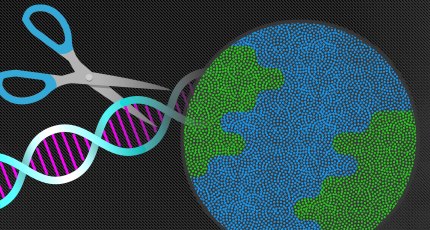
Army photogrammetry technique makes 3D aerial maps in minutes
Devin Coldewey5:45 pm -03 • November 16, 2019
Aerial imagery is a common asset in military matters, but 3D maps can be difficult to collect on short notice without specialized equipment. This new photogrammetry technique from the Army Corps of…

‘Magic: The Gathering’ game maker exposed 452,000 players’ account data
Zack Whittaker4:28 pm -03 • November 16, 2019
The maker of Magic: The Gathering has confirmed that a security lapse exposed the data on hundreds of thousands of game players. The game’s developer, the Washington-based Wizards of the Coas…

Extra Crunch
This Week in Apps: Apple’s vaping app ban, Disney+ gets installed, apps gear up for Black Friday
Sarah Perez12:41 pm -03 • November 16, 2019
Welcome back to This Week in Apps, the Extra Crunch series that recaps the latest OS news, the applications they support, and the money that flows through it all. What are developers talking about?…

The House and Senate finally agree on something: Robocalls
Devin Coldewey8:48 pm -03 • November 15, 2019
In these times of political strife, it’s nice that despite our differences we can still band together as a nation in the face of a catastrophe that affects us all equally. I speak, of course,…

Those crappy pre-installed Android apps can be full of security holes
Greg Kumparak8:00 pm -03 • November 15, 2019
If you’ve ever bought an Android phone, there’s a good chance you booted it up to find it pre-loaded with junk you definitely didn’t ask for. These pre-installed apps can be clunk…

Facebook’s Libra code chugs along ignoring regulatory deadlock
Josh Constine6:50 pm -03 • November 15, 2019
“5 months and growing strong” the Libra Association announced today in a post about its technical infrastructure that completely omits the fierce regulatory backlash to its cryptocurren…
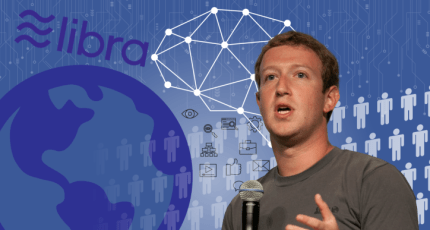
Extra Crunch
Why Salesforce is moving Marketing Cloud to Microsoft Azure
Ron Miller6:30 pm -03 • November 15, 2019
When Salesforce announced this week that it was moving Marketing Cloud to Microsoft Azure, it was easy to see this as another case of wacky enterprise partnerships. But there had to be sound busine…

Extra Crunch
D-Wave sticks with its approach to quantum computing
Frederic Lardinois6:00 pm -03 • November 15, 2019
Earlier this month, at the WebSummit conference in Lisbon, D-Wave and Volkswagen teamed up to manage a fleet of buses using a new system that, among other things, used D-Wave’s quantum techno…
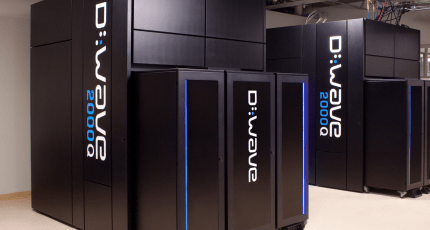
VC Cyan Banister on who decides what at Founders Fund (and much more)
Connie Loizos5:28 pm -03 • November 15, 2019
Cyan Banister is an American success story. A homeless teenager who originally supported herself by making hemp necklaces, then silk-screen T-shirts, she went on to become a self-taught engineer an…
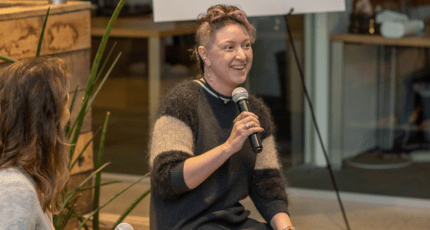
Daily Crunch: TikTok starts experimenting with commerce
Anthony Ha5:20 pm -03 • November 15, 2019
The Daily Crunch is TechCrunch’s roundup of our biggest and most important stories. If you’d like to get this delivered to your inbox every day at around 9am Pacific, you can subscribe …


Three of Apple and Google’s former star chip designers launch NUVIA with $53M in series A funding
Silicon is apparently the new gold these days, or so VCs hope. What was once a no-go zone for ven…Danny Crichton5:08 pm -03 • November 15, 2019
Twitter makes its political ad ban official
Devin Coldewey4:45 pm -03 • November 15, 2019
The ban on political ads announced by Twitter two weeks ago has come into effect, and the rules are surprisingly simple — perhaps too simple. No political content as they define it may be promoted;…

Hulu increases price for live TV by $10, to $55 per month
Anthony Ha4:35 pm -03 • November 15, 2019
Hulu just sent an email to subscribers of its Hulu + Live TV plan announcing that the price of the basic live TV plan will increase from $44.99 per month to $54.99 per month. This is Hulu + Live TV…

More layoffs at pivoting London ed tech startup pi-top
Natasha Lomas3:28 pm -03 • November 15, 2019
London ed tech startup pi-top has gone through another round of layoffs, TechCrunch has learned. Pi-top confirmed that eight jobs have been cut in the London office, saying the job losses resulted …

Extra Crunch
Know your startup’s value so you can communicate it to investors
Blair Silverberg3:19 pm -03 • November 15, 2019
Understanding whether you’re creating or destroying value is the first step in communicating to investors why your company is worth their money.

Virgin Galactic begins ‘Astronaut Readiness Program’ for first paying customers
Darrell Etherington11:46 am -03 • November 15, 2019
Virgin Galactic has begun its “Astronaut Readiness Program” this week, which is being run out of Under Armour Global HQ to start. Under Armour is Virgin Galactic’s partner on its …

LA warns of ‘juice-jacking’ malware, but admits it has no cases
Zack Whittaker11:33 am -03 • November 15, 2019
Los Angeles’ district attorney is warning travelers to avoid public USB charging points because “they may contain dangerous malware.” Reading the advisory, you might be forgiven f…

Extra Crunch
Takeaways from Nvidia’s latest quarterly earnings
Danny Crichton11:22 am -03 • November 15, 2019
Nvidia has been on a wild growth ride the past five years. Surfing a wave around AI deep learning and cryptocurrency where its specialized chip architecture is among the highest performing, the com…

Web Summit cancels next year’s Rise conference over tension in Hong Kong
Manish Singh11:15 am -03 • November 15, 2019
The ongoing tension in Hong Kong between the government and pro-democracy protesters continues to spill into the tech domain. Rise, which is among the largest tech conferences in Asia, will not run…

- TechCrunch
- Privacy Policy
- Do Not Sell My Personal Information
- About Our Ads
- Code of Conduct
- Terms of Service
© 2013-2019 Verizon Media. All rights reserved. Powered by WordPress VIP(opens in a new window). Fonts by TypeKit(opens in a new window).
Skip to main contentBecome a MemberLog InScienceMag.orgSearch
Advertisement
SHARE

Revamped cancer drug starves tumors in mice
By Mitch LeslieNov. 7, 2019 , 2:00 PM
Tumors are hogs, gobbling nutrients to fuel their runaway growth, and for decades researchers have tried to develop drugs that cut off their food supply. A study out today shows that an updated version of a failed cancer drug can not only prevent tumor cells from using an essential nutrient, but also spur immune cells to attack the growths.
“It’s a pretty striking paper,” says cancer biologist Ralph DeBerardinis of the University of Texas Southwestern Medical Center in Dallas, who wasn’t connected to the study. “With a single drug, you can in effect starve the tumor and beef up the immune cells.”
Cancer cells eat to obtain molecules vital for survival and replication, but their gluttony also turns their surroundings into an acidic, oxygen-deprived moat that stymies immune cells trying to eliminate them. One of the nutrients many tumors need in abundance is the amino acid glutamine, which provides the building blocks for fabricating molecules such as DNA, proteins, and lipids. “Glutamine is incredibly important for cellular metabolism,” says immunologist Jonathan Powell of the Johns Hopkins School of Medicine in Baltimore, Maryland.
SIGN UP FOR OUR DAILY NEWSLETTER
Get more great content like this delivered right to you!
Starting in the 1950s, researchers tried to turn tumors’ glutamine dependence against them, developing drugs to block its metabolism. A bacteria-derived compound called DON, for instance, kills tumors by inhibiting several enzymes that allow cancer cells to use glutamine. In clinical trials, however, the drug provoked severe nausea and vomiting, and it was never approved.
Now, Powell and colleagues have crafted a new version of DON that may be easier to stomach. It carries two chemical groups that keep it inert until it reaches the tumor’s neighborhood. There, enzymes that normally loiter around tumors remove these molecular handcuffs, unleashing the drug on the cancerous cells. With this approach, “the vast majority of the active drug is where we want,” Powell says.
To test their new compound, he and colleagues injected four types of cancer cells into mice, inducing tumors. They then dosed some of the animals with their next-generation DON. The drug worked against all four kinds of tumors, the scientists report today in Science. In untreated mice, for example, colon cancer tumors had grown more than five times larger after about 3 weeks. But in rodents that received DON, the tumors shrank and almost disappeared. The researchers found that the drug wasn’t just throttling glutamine metabolism. It was also disrupting other aspects of the cells’ biochemistry, such as their ability to use the sugar glucose.
One concern about drugs that target cancer cell metabolism is that they will also poison normal cells, including the immune cells that battle tumors. But Powell and colleagues found that their version of DON revved up T cells to destroy cancer cells. The scientists discovered that T cells deprived of glutamine by DON could switch to an alternative source of the raw materials needed to synthesize DNA and other key molecules, whereas tumor cells couldn’t. With the new DON version, “we disable the ability of the tumor to proliferate and to evade the immune system,” Powell says.
The study’s findings are a surprise—but a good one, says tumor biologist Ji Zhang of the Indiana University School of Medicine in Indianapolis. “This paper is the first to show that the response to glutamine inhibition in T cells and cancer cells is different.”
“That T cells are not inhibited by this compound, that is the miracle” that may allow the drug to become a cancer treatment, says biochemist Stefan Kempa of the Max Delbrück Center for Molecular Medicine in Berlin. He cautions that drugs that shine in mouse studies often don’t work in people, but “if this compound can be translated to humans, it has a bright future.”
That bright future could begin next year, when Powell says safety testing of the drug will begin in people.Posted in:
doi:10.1126/science.aba1403
Mitch Leslie
Mitch Leslie writes about cell biology and immunology.
More from News
- Here’s a better way to convert dog years to human years, scientists say
- New polymer-coated vitamins and minerals could fight malnutrition in low-income countries
- Toxic gut bacteria make alcohol-triggered liver disease more deadly
Enjoy reading News from Science? Subscribe today. If you have already subscribed, log into your News account.
Got a tip?
Advertisement
Advertisement
ScienceInsider
- Ballot initiative takes shape to give California stem cell agency a second lifeBY KELLY SERVICKNOV. 15, 2019
- Move by journals to ‘seamless’ off-campus access raises privacy concernsBY JEFFREY BRAINARDNOV. 15, 2019
- EPA’s ‘secret science’ plan is back, and critics say it’s worseBY DAVID MALAKOFFNOV. 12, 2019
- Why NIH is beefing up its data sharing rules after 16 yearsBY JOCELYN KAISERNOV. 11, 2019
- United States should make a massive investment in AI, top Senate Democrat saysBY JEFFREY MERVISNOV. 11, 2019
Sifter
- Apes may have started to walk on two legs millions of years earlier than thoughtBY KENNETH MORANOV. 8, 2019
- We didn’t start the fire—it was the invasive grassesBY EVA FREDERICKNOV. 7, 2019
- Universe could loop back on itself, study of ancient light suggestsBY ADRIAN CHONOV. 7, 2019
- Voyager 2 probes the edge of interstellar spaceBY EVA FREDERICKNOV. 5, 2019
- The fastest ant in the world could hit 200 meters per second—if it were as big as a humanBY KENNETH MORAOCT. 31, 2019
More SifterRead the Latest Issue of Science
15 November 2019
Vol 366, Issue 6467

- ECOLOGYArctic intruder
- ECOLOGYLife partners
- SCIENTIFIC COMMUNITYTop Democrat wants big AI push
- ECOLOGYA mysterious disease is striking American beech trees
- GEOCHEMISTRY/GEOPHYSICSDrones reveal earthquake hazards hidden in the abyss
- MEDICINE/DISEASESBacterial toxin linked to severe alcoholic liver disease
Get Our E-Alerts
Receive emails from Science. See full listScience Table of ContentsScience Daily NewsWeekly News RoundupScience Editor’s ChoiceFirst Release NotificationScience Careers Job SeekerCountryCountry*AfghanistanAland IslandsAlbaniaAlgeriaAndorraAngolaAnguillaAntarcticaAntigua and BarbudaArgentinaArmeniaArubaAustraliaAustriaAzerbaijanBahamasBahrainBangladeshBarbadosBelarusBelgiumBelizeBeninBermudaBhutanBolivia, Plurinational State ofBonaire, Sint Eustatius and SabaBosnia and HerzegovinaBotswanaBouvet IslandBrazilBritish Indian Ocean TerritoryBrunei DarussalamBulgariaBurkina FasoBurundiCambodiaCameroonCanadaCape VerdeCayman IslandsCentral African RepublicChadChileChinaChristmas IslandCocos (Keeling) IslandsColombiaComorosCongoCongo, The Democratic Republic of theCook IslandsCosta RicaCote D’IvoireCroatiaCubaCuraçaoCyprusCzech RepublicDenmarkDjiboutiDominicaDominican RepublicEcuadorEgyptEl SalvadorEquatorial GuineaEritreaEstoniaEthiopiaFalkland Islands (Malvinas)Faroe IslandsFijiFinlandFranceFrench GuianaFrench PolynesiaFrench Southern TerritoriesGabonGambiaGeorgiaGermanyGhanaGibraltarGreeceGreenlandGrenadaGuadeloupeGuatemalaGuernseyGuineaGuinea-BissauGuyanaHaitiHeard Island and Mcdonald IslandsHoly See (Vatican City State)HondurasHong KongHungaryIcelandIndiaIndonesiaIran, Islamic Republic ofIraqIrelandIsle of ManIsraelItalyJamaicaJapanJerseyJordanKazakhstanKenyaKiribatiKorea, Democratic People’s Republic ofKorea, Republic ofKuwaitKyrgyzstanLao People’s Democratic RepublicLatviaLebanonLesothoLiberiaLibyan Arab JamahiriyaLiechtensteinLithuaniaLuxembourgMacaoMacedonia, The Former Yugoslav Republic ofMadagascarMalawiMalaysiaMaldivesMaliMaltaMartiniqueMauritaniaMauritiusMayotteMexicoMoldova, Republic ofMonacoMongoliaMontenegroMontserratMoroccoMozambiqueMyanmarNamibiaNauruNepalNetherlandsNew CaledoniaNew ZealandNicaraguaNigerNigeriaNiueNorfolk IslandNorwayOmanPakistanPalestinianPanamaPapua New GuineaParaguayPeruPhilippinesPitcairnPolandPortugalQatarReunionRomaniaRussian FederationRWANDASaint Barthélemy Saint Helena, Ascension and Tristan da CunhaSaint Kitts and NevisSaint LuciaSaint Martin (French part)Saint Pierre and MiquelonSaint Vincent and the GrenadinesSamoaSan MarinoSao Tome and PrincipeSaudi ArabiaSenegalSerbiaSeychellesSierra LeoneSingaporeSint Maarten (Dutch part)SlovakiaSloveniaSolomon IslandsSomaliaSouth AfricaSouth Georgia and the South Sandwich IslandsSouth SudanSpainSri LankaSudanSurinameSvalbard and Jan MayenSwazilandSwedenSwitzerlandSyrian Arab RepublicTaiwanTajikistanTanzania, United Republic ofThailandTimor-LesteTogoTokelauTongaTrinidad and TobagoTunisiaTurkeyTurkmenistanTurks and Caicos IslandsTuvaluUgandaUkraineUnited Arab EmiratesUnited KingdomUnited StatesUruguayUzbekistanVanuatuVenezuela, Bolivarian Republic ofVietnamVirgin Islands, BritishWallis and FutunaWestern SaharaYemenZambiaZimbabwe
Email I agree to receive emails from AAAS/Science
and Science advertisers, including information on
products, services, and special offers which may
include but are not limited to news, career
information, & upcoming events.Sign up today
Required fields are indicated by an asterisk (*)

© 2019 American Association for the Advancement of Science. All rights Reserved. AAAS is a partner of HINARI, AGORA, OARE, CHORUS, CLOCKSS, CrossRef and COUNTER.
CloseTOPICS
COLLECTIONS
- COMICS
- VIDEOS
- DISEASE UPDATE
- EXPLAINED
- IN REVIEW
- Q&A
- STORY BEHIND A PICTURE
- SPECIAL REPORT: PERSUASION
- SPECIAL REPORT: THE WORKING LIFE




CREDIT: T. PYLE / CALTECH / MIT / LIGO LAB
Einstein’s general theory of relativity shows that gravity is the result of a mass, such as a planet or star, warping the geometry of the merger of time and space known as spacetime.PHYSICAL WORLD
A quantum origin for spacetime
Physicists find hints that entanglement explains Einstein’s equations for gravity
By Tom Siegfried 05.03.2019
Rod Serling knew all about dimensions. His Twilight Zone was a dimension of imagination, a dimension of sight and sound and mind, a dimension as vast as space and timeless as infinity. It was all very clear except for the space and time part, the dimensions of real life. Serling never explained them.
Of course, ever since Einstein, scientists have also been scratching their heads about how to make sense of space and time. Before then, almost everybody thought Isaac Newton had figured it all out. Time “flows equably without relation to anything external,” he declared. Absolute space is also its own thing, “always similar and immovable.” Nothing to see there. Events of physical reality performed independently on a neutral stage where actors strutted and fretted without influencing the rest of the theater.
But Einstein’s theories turned Newton’s absolute space and time into a relativistic mash-up — his equations suggested a merged spacetime, a new sort of arena in which the players altered the space of the playing field. It was a physics game changer. No longer did space and time provide a featureless backdrop for matter and energy. Formerly independent and uniform, space and time became inseparable and variable. And as Einstein showed in his general theory of relativity, matter and energy warped the spacetime surrounding it. That simple (hah!) truth explained gravity. Newton’s apparent force of attraction became an illusion perpetrated by spacetime geometry. It was the shape of spacetime that dictated the motion of massive bodies, a symmetric justice since massive bodies determined spacetime’s shape.
“The emergence of spacetime and gravity is a mysterious phenomenon of quantum many-body physics that we would like to understand.”BRIAN SWINGLE
Verification of Einstein’s spacetime revolution came a century ago, when an eclipse expedition confirmed his general theory’s prime prediction (a precise amount of bending of light passing near the edge of a massive body, in this case the sun). But spacetime remained mysterious. Since it was something rather than nothing, it was natural to wonder where it came from.
Now a new revolution is on the verge of answering that question, based on insights from the other great physics surprise of the last century: quantum mechanics. Today’s revolution offers the potential for yet another rewrite of spacetime’s résumé, with the bonus of perhaps explaining why quantum mechanics seems so weird.
“Spacetime and gravity must ultimately emerge from something else,” writes physicist Brian Swingle in the 2018 Annual Review of Condensed Matter Physics . Otherwise it’s hard to see how Einstein’s gravity and the math of quantum mechanics can reconcile their longstanding incompatibility. Einstein’s view of gravity as the manifestation of spacetime geometry has been enormously successful. But so also has been quantum mechanics, which describes the machinations of matter and energy on the atomic scale with unerring accuracy. Attempts to find coherent math that accommodates quantum weirdness with geometric gravity, though, have met formidable technical and conceptual roadblocks.
At least that has long been so for attempts to understand ordinary spacetime. But clues to a possible path to progress have emerged from the theoretical study of alternate spacetime geometries, thinkable in principle but with unusual properties. One such alternate, known as anti de Sitter space, is weirdly curved and tends to collapse on itself, rather than expanding as the universe we live in does. It wouldn’t be a nice place to live. But as a laboratory for studying theories of quantum gravity, it has a lot to offer. “Quantum gravity is sufficiently rich and confusing that even toy universes can shed enormous light on the physics,” writes Swingle, of the University of Maryland.
Studies of anti de Sitter space suggest, for instance, that the math describing gravity (that is, spacetime geometry) can be equivalent to the math of quantum physics in a space of one less dimension. Think of a hologram — a flat, two-dimensional surface that incorporates a three-dimensional image. In a similar way, perhaps the four-dimensional geometry of spacetime could be encoded in the math of quantum physics operating in three-dimensions. Or maybe you need more dimensions — how many dimensions are required is part of the problem to be solved.
In any case, investigations along these lines have revealed a surprising possibility: Spacetime itself may be generated by quantum physics, specifically by the baffling phenomenon known as quantum entanglement.
As popularly explained, entanglement is a spooky connection linking particles separated even by great distances. If emitted from a common source, such particles remain entangled no matter how far they fly away from each other. If you measure a property (such as spin or polarization) for one of them, you then know what the result of the same measurement would be for the other. But before the measurement, those properties are not already determined, a counterintuitive fact verified by many experiments. It seems like the measurement at one place determines what the measurement will be at another distant location.YOU MAY ALSO LIKEPHYSICAL WORLD
The story of Snowball Earth
Making sense of many universes
Building planets, piece by piece
That sounds like entangled particles must be able to communicate faster than light. Otherwise it’s impossible to imagine how one of them could know what was happening to the other across a vast spacetime expanse. But they actually don’t send any message at all. So how do entangled particles transcend the spacetime gulf separating them? Perhaps the answer is they don’t have to — because entanglement doesn’t happen in spacetime. Entanglement creates spacetime.
At least that’s the proposal that current research in toy universes has inspired. “The emergence of spacetime and gravity is a mysterious phenomenon of quantum many-body physics that we would like to understand,” Swingle suggests in his Annual Review paper. Vigorous effort by several top-flight physicists has produced theoretical evidence that networks of entangled quantum states weave the spacetime fabric. These quantum states are often described as “qubits” — bits of quantum information (like ordinary computer bits, but existing in a mix of 1 and 0, not simply either 1 or 0). Entangled qubits create networks with geometry in space with an extra dimension beyond the number of dimensions that the qubits live in. So the quantum physics of qubits can then be equated to the geometry of a space with an extra dimension. Best of all, the geometry created by the entangled qubits may very well obey the equations from Einstein’s general relativity that describe motion due to gravity — at least the latest research points in that direction. “Apparently, a geometry with the right properties built from entanglement has to obey the gravitational equations of motion,” Swingle writes. “This result further justifies the claim that spacetime arises from entanglement.”
Still, it remains to be shown that the clues found in toy universes with extra dimensions will lead to the true story for the ordinary spacetime in which real physicists strut and fret. Nobody really knows exactly what quantum processes in the real world would be responsible for weaving spacetime’s fabric. Maybe some of the assumptions made in calculations so far will turn out to be faulty. But it could be that physics is on the brink of peering more deeply into nature’s foundations than ever before, into an existence containing previously unknown dimensions of space and time (or sight and sound) that might end up making The Twilight Zone into Reality TV.
10.1146/knowable-050319-1
Tom Siegfried is a science writer and editor in the Washington, DC, area. He writes the Context blog for Science News and his book about the history of the multiverse will be published in September. REPUBLISH THIS ARTICLE
Support Knowable Magazine
Your generosity will help us continue making scientific knowledge accessible to all.DONATE
TAKE A DEEPER DIVE | Explore Related Articles from Annual ReviewsANNUAL REVIEW OF CONDENSED MATTER PHYSICSSpacetime from EntanglementNew investigations suggest that spacetime and its geometry, responsible for gravity, emerges from the mysterious phenomenon known as quantum entanglement.MORE FROM


Unbound and out: Boosted by black holes, stars speed off, leaving clues behind

Lost world: An ancient ninth planet that went missing

Knowable Magazine is from Annual Reviews, a nonprofit publisher dedicated to synthesizing and integrating knowledge for the progress of science and the benefit of society.
© 2019 Annual Reviews, Inc

Like!! Great article post.Really thank you! Really Cool.
LikeLike
thanks to the author for taking his clock time on this one.
LikeLike
I enjoy your piece of work, thanks for all the useful articles.
LikeLike
Free Android smartphone vpn servers: https://play.google.com/store/apps/details?id=com.rns.buddyvpnprov
LikeLike
Excellent website. Plenty of useful information here. I’m sending it to a few friends ans also sharing in delicious. And certainly, thanks for your sweat!
LikeLike
Just what I was searching for, thanks for posting.
LikeLike
I got what you intend, thanks for posting.
LikeLike
Helped me a lot, just what I was searching for : D.
LikeLike
Hey there! This is my first visit to your blog!
We are a group of volunteers and starting a new project in a community in the same niche.
Your blog provided us useful information to work on. You have done a marvellous
job!
LikeLike
I really like and appreciate your blog post.
LikeLike
I really like and appreciate your blog post.
LikeLike
Best Ballons around here !
LikeLike
Thanks
LikeLike
great work.
LikeLike
keep it up!
LikeLike
I love your blog.. very nice colors & theme. Did you make this website yourself or did you hire someone to do it for you? Plz answer back as I’m looking to construct my own blog and would like to know where u got this from. many thanks
LikeLike
I absolutely love your blog and find most of your post’s to be what precisely I’m looking for. Does one offer guest writers to write content to suit your needs? I wouldn’t mind producing a post or elaborating on a number of the subjects you write about here. Again, awesome website!
LikeLike
bookmarked!!, I like your blog!
LikeLike
very good put up, i definitely love this website, keep on it
LikeLike
I love what you guys tend to be up too. This sort of clever work and reporting! Keep up the fantastic works guys I’ve you guys to my personal blogroll.
LikeLike
Does your website have a contact page? I’m having trouble locating it but, I’d like to send you an e-mail. I’ve got some creative ideas for your blog you might be interested in hearing. Either way, great blog and I look forward to seeing it develop over time.
LikeLike
Hi! I’m a Spanish Single Mom living in Seattle, I found your article to be soooo Usefull!
LikeLike
calls are now easy with mobile phones
LikeLike
Does anybody know whether Vital Vapes vaping shop located in 2485 S McCall Rd offers eliquid manufactured by Tropic 100 by Tailored Vapors? I have tried sending them an email at at southernvapeescape@live.com
LikeLike